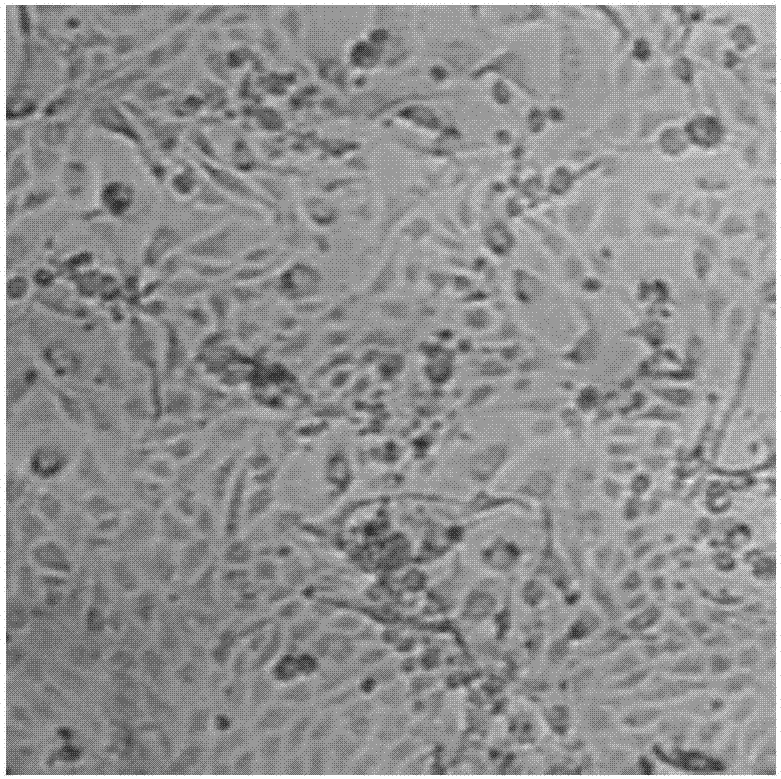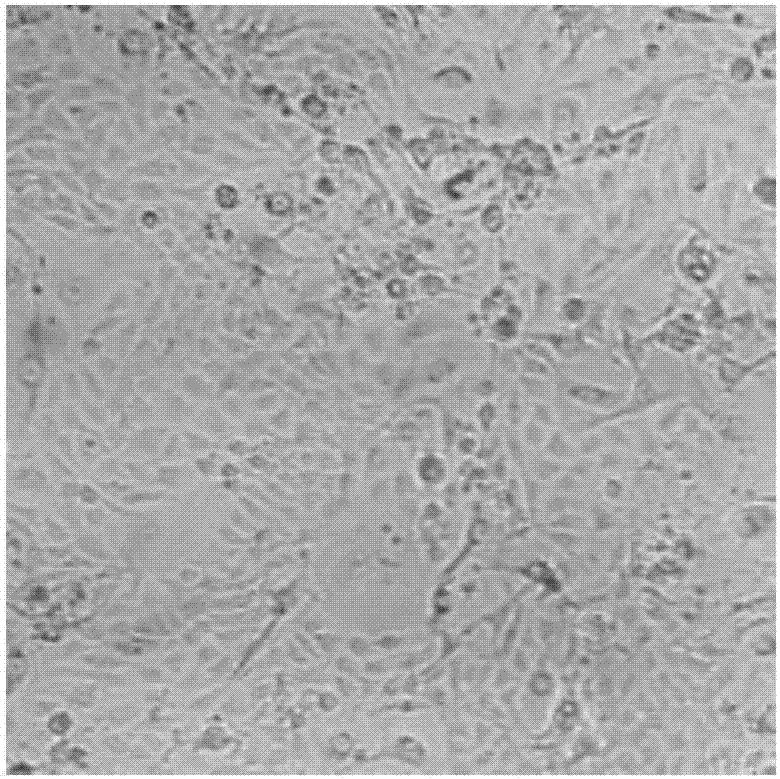Feeder cell processing method applied to conditional reprogramming technology
A feeder cell and treatment method technology, applied in the feeder cell treatment field, can solve the problems of difficult cells, affect the secretion of nutrients of feeder cells, etc., and achieve the effects of good effect, protection of biological characteristics, and simple and effective treatment method.
- Summary
- Abstract
- Description
- Claims
- Application Information
AI Technical Summary
Problems solved by technology
Method used
Image
Examples
Embodiment 1
[0031] Preparation of conditioned medium:
[0032] Under sterile conditions, take F12 basal medium, DMEM basal medium, hydrocortisone / EGF mixture, amphotericin B, botulinum toxin fibronectin and ROCK inhibitor Y-27632, and mix well, namely Obtain the conditioned medium described in the embodiments of the present invention;
[0033] The dosage of each component of the conditioned medium is as follows: F12 basal medium 25% (v / v), fetal bovine serum 5% (v / v), hydrocortisone / EGF mixture 30 μg / mL, amphotericin B 250 μg / mL mL, botulinum toxin fibronectin 5 μg / mL, ROCK inhibitor Y-276325nmol / L, and the balance is DMEM basal medium; wherein, hydrocortisone / EGF mixture, by mass ratio, hydrocortisone: EGF is 5:1.
Embodiment 2
[0035] (1) Treatment of 3T3-J2 feeder cells
[0036] S1: Take 3T3-J2 feeder cells and inoculate at a density of 1×10 6 Inoculate cells / mL into cell culture flasks, add conditioned medium to culture until the cell confluence reaches 50%, remove the medium, and wash the cells with PBS solution for 3 times;
[0037] S2: Add 2 μg / mL mitomycin C, treat at 37°C for 3 hours, remove the mitomycin C solution, wash the cells with PBS solution 3 times, add conditioned medium, at 37°C, 5%CO 2 cultured in an incubator.
[0038] (2) Acquisition of primary lung cancer cells
[0039] Take the surgically resected lung cancer tissue, cut it into 2-3mm tissue pieces, rinse to remove blood and other impurities, add 1% collagenase to digest overnight at 4°C, add conditioned medium, repeatedly blow and beat the tissue piece to obtain lung cancer single cells The suspension was filtered to obtain the lung cancer primary cell suspension.
[0040] (3) CRCs culture of lung cancer primary cells
...
Embodiment 3
[0044] (1) Treatment of 3T3-J2 feeder cells
[0045] S1: Take 3T3-J2 feeder cells and inoculate at a density of 1×10 6 Inoculate cells / mL into cell culture flasks, add conditioned medium to culture until the cell confluence reaches 70%, remove the medium, and wash the cells with PBS solution for 3 times;
[0046] S2: Add 3 μg / mL mitomycin C, treat at 37°C for 2 hours, remove the mitomycin C solution, wash the cells with PBS solution 3 times, add conditioned medium, at 37°C, 5%CO 2 cultured in an incubator.
[0047] (2) Acquisition of primary lung cancer cells
[0048] Take the surgically resected lung cancer tissue, cut it into 2-3mm tissue pieces, rinse to remove blood and other impurities, add 1% collagenase to digest overnight at 4°C, add conditioned medium, repeatedly blow and beat the tissue piece to obtain lung cancer single cells The suspension was filtered to obtain the lung cancer primary cell suspension.
[0049] (3) CRCs culture of lung cancer primary cells
...
PUM
 Login to View More
Login to View More Abstract
Description
Claims
Application Information
 Login to View More
Login to View More - R&D
- Intellectual Property
- Life Sciences
- Materials
- Tech Scout
- Unparalleled Data Quality
- Higher Quality Content
- 60% Fewer Hallucinations
Browse by: Latest US Patents, China's latest patents, Technical Efficacy Thesaurus, Application Domain, Technology Topic, Popular Technical Reports.
© 2025 PatSnap. All rights reserved.Legal|Privacy policy|Modern Slavery Act Transparency Statement|Sitemap|About US| Contact US: help@patsnap.com



